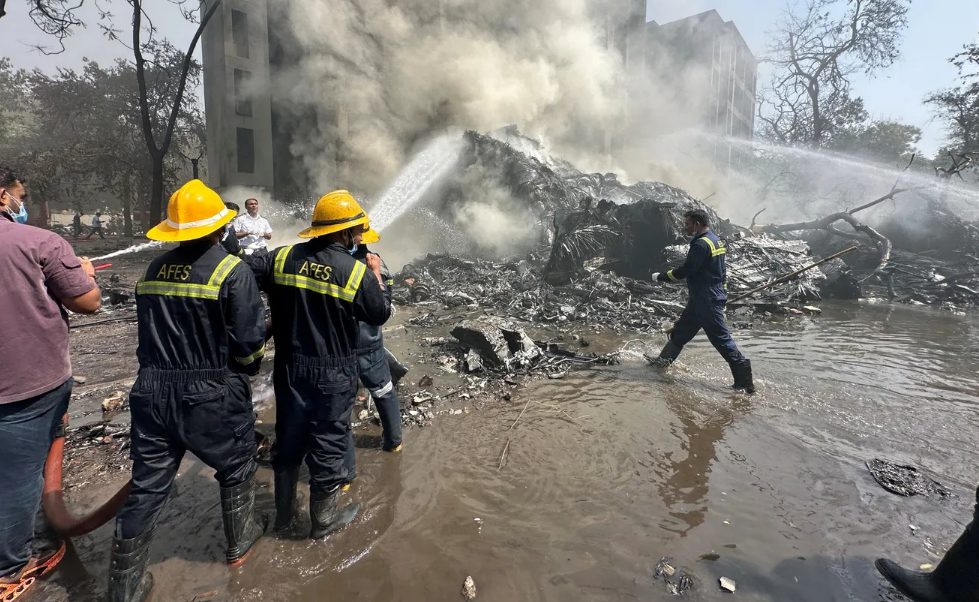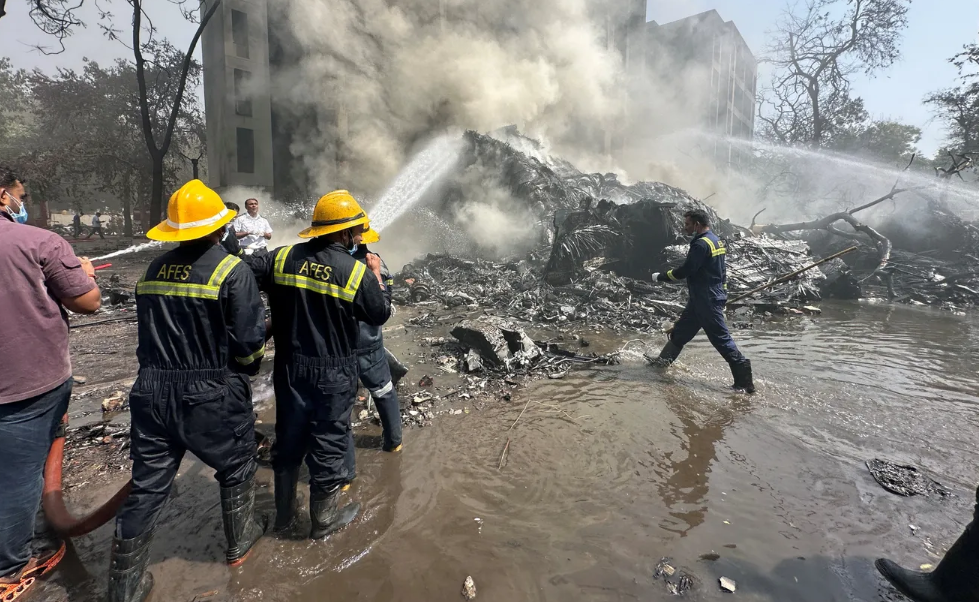
Shockwaves across the aviation world
When a plane crash occurs, it sends tremors not only through the families of those onboard but through the entire global aviation industry. The recent Air India tragedy was one such incident—tragic, sudden, and deeply unsettling.
Why this story matters
Air travel is often seen as one of the safest modes of transport. So, when an Air India flight crashes, it challenges that belief. People want to know: what happened, who was onboard, and could it have been prevented?
Overview of the Incident
When and where did the crash happen?
The Air India plane crash occurred on [Insert Date], near [Insert Location]. The aircraft was attempting to land amid poor visibility when it skidded off the runway and broke into pieces.
Flight number and airline history
The flight was AI-[XXX], operated by Air India Express, a subsidiary of Air India known for budget international routes. Air India has a complex history, with previous incidents but also decades of global service.
Route and destination details
The plane took off from [Origin City] and was headed toward [Destination City], carrying passengers eager to return home, visit loved ones, or continue professional journeys.
The Aircraft Involved
Model and technical specifications
The aircraft was a Boeing 737, widely used in commercial aviation. Known for its efficiency and reliability, it’s a popular choice among airlines.
Aircraft age and service record
This specific aircraft was [X] years old and had flown over [X,000] hours. Maintenance logs indicated regular checkups with no outstanding issues.
Previous technical issues (if any)
There were no red flags raised in recent inspections, though some media outlets mentioned minor maintenance concerns flagged months earlier.
Passenger Details
Number of passengers and crew onboard
There were a total of [XXX] people onboard, including [X] crew members and [X] passengers.
Nationalities of the passengers
Most were Indian nationals, many returning from work abroad. Others included citizens of [Other Countries], showcasing the flight’s international nature.
Profiles: families, students, professionals
Among the passengers were families with children, international students, business travelers, and expatriate workers—each with a different story, all united by tragedy.
What Led to the Crash?
Weather conditions
Monsoon rains had reduced visibility dramatically. Reports suggest slippery runways and crosswinds may have been a contributing factor.
Pilot communications and distress signals
The pilot had reportedly attempted a go-around earlier but made the final landing under stressful conditions. There were no distress calls before impact, indicating a sudden loss of control.
Initial investigation reports
Preliminary reports suggest that weather, combined with possible pilot misjudgment, led to the crash. However, no final conclusion has been reached.
Emergency Response
Rescue efforts and timeline
First responders arrived within minutes. Local villagers and airport staff were first to pull survivors from the wreckage.
Role of local authorities and first responders
Local hospitals were on high alert. Firefighters, police, and paramedics coordinated seamlessly, preventing further casualties.
Survivor accounts
Many survivors described the sound of breaking metal, thick smoke, and confusion. A few managed to crawl out before the flames intensified.
Casualties and Survivors
Confirmed fatalities
Sadly, [X] people lost their lives in the crash, including the pilot and co-pilot.
Injuries and hospitalizations
Over [X] were severely injured and admitted to hospitals across the region. Many are still in recovery.
Miraculous survival stories
One child was found alive underneath debris after hours—a beacon of hope amid heartbreak.
Statements from Authorities
Air India’s official response
Air India released a public statement expressing deep sorrow and announcing a full internal investigation.
DGCA and Civil Aviation Ministry updates
India’s DGCA and Ministry of Civil Aviation confirmed an independent investigation and pledged full transparency.
Governmental condolences and international reactions
Condolences poured in from leaders worldwide. Indian Prime Minister called it a “national tragedy.”
Family Reactions and Support Efforts
How families are coping
Tears, anguish, and disbelief—families waited outside hospitals, clinging to hope and searching for news.
Support helplines and relief efforts
Air India and government agencies activated emergency hotlines and announced compensation packages for victims’ families.
Compensation and legal proceedings
Legal teams are assisting families in filing claims. Compensation is expected under aviation and humanitarian laws.
Investigation and Analysis
Role of the black box
The flight data recorder and cockpit voice recorder were recovered and sent for analysis.
Involvement of international aviation bodies
The FAA, Boeing, and other global agencies are offering assistance to ensure a transparent review.
Timeline for final report
A comprehensive final report may take several months but will include all contributing factors.
Media Coverage and Public Reaction
Social media trends
#AirIndiaCrash and #PrayForPassengers trended globally. Eyewitnesses shared videos and updates in real-time.
News networks’ reporting
Major news channels offered wall-to-wall coverage, with analysts discussing every angle of the crash.
Public memorials and tributes
Candlelight vigils, online tributes, and memorial services honored the lives lost in the tragedy.
Lessons Learned and Future Implications
Policy changes in aviation
Expect tighter landing protocols during bad weather and updated pilot training modules.
Safety improvements
Runway improvements and emergency equipment upgrades are being recommended.
Pilot training and technical upgrades
More rigorous simulation training and technical briefings for pilots flying into difficult terrains.

Similar Past Incidents
Other Air India crashes in history
Notable incidents like the 1978 and 2010 Air India crashes are often compared. Each incident taught the industry something new.
Comparisons and what’s changed since
Safety measures have improved dramatically, but human error and weather continue to challenge aviation.
How to Stay Safe While Flying
Passenger safety tips
Always listen to safety briefings, locate emergency exits, and fasten your seatbelt when advised.
Choosing airlines and understanding aircraft
Fly with reputable airlines and familiarize yourself with your aircraft model.
What to do in emergencies
Stay calm, follow crew instructions, and help others if safe to do so.
Conclusion
The Air India crash is a stark reminder that even in this age of advanced technology, tragedies can still occur. While we mourn those who’ve been lost, we must also learn, adapt, and strive to ensure air travel remains safe for everyone.
FAQs
1. What caused the Air India crash?
Initial reports suggest a combination of bad weather and possible pilot error. The final investigation is still underway.
2. Were there any survivors in the Air India crash?
Yes, many passengers survived, some with minor injuries and others severely hurt. Rescue teams acted swiftly.
3. How does the aviation industry handle such tragedies?
An independent investigation is launched, followed by safety audits, policy revisions, and often compensation for victims.
4. Will the families of victims receive compensation?
Yes, compensation is being processed through legal channels and humanitarian funds.
5. Is flying still safe after this incident?
Absolutely. Air travel remains one of the safest modes of transportation, and each incident leads to more improvements.

